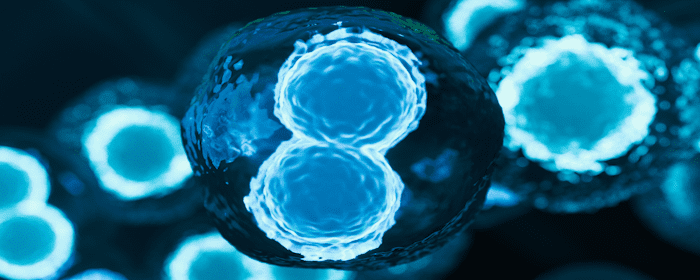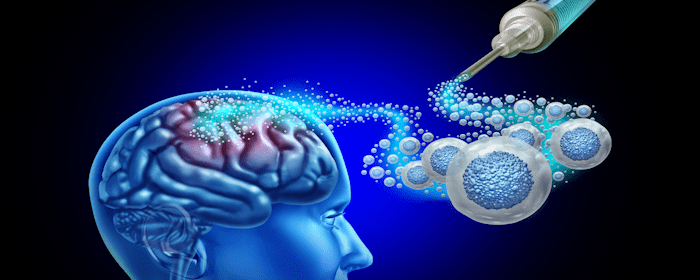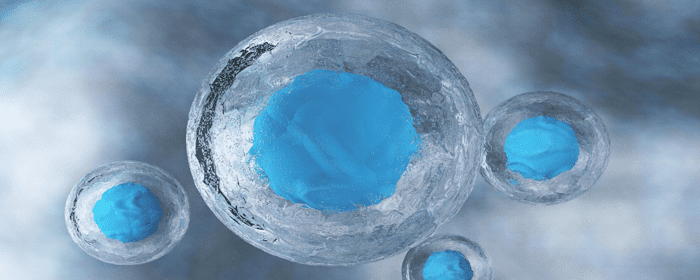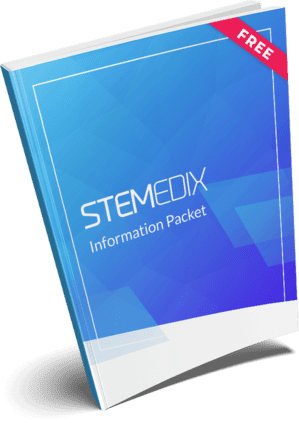
by admin | Jun 10, 2025 | Mesenchymal Stem Cells, Multiple Sclerosis, Neurodegenerative Diseases, Regenerative Medicine, Stem Cell Research, Stem Cell Therapy
Multiple sclerosis (MS) is a chronic autoimmune disorder that affects the central nervous system (CNS). It is characterized by inflammation, the breakdown of the protective myelin covering of nerve fibers, and progressive nerve damage. These processes contribute to a wide range of symptoms including fatigue, sensory changes, vision problems, and cognitive difficulties. MS primarily affects young adults, with women being more commonly affected than men. The disease is classified into three main types: relapsing-remitting MS (RRMS), secondary progressive MS (SPMS), and primary progressive MS (PPMS), each with distinct patterns of disease progression and neurological damage. The exact causes of MS are complex and involve interactions between genetics, environment, viral infections like Epstein-Barr virus, and epigenetic factors.
Despite advances in treatment, current therapies for MS largely focus on modulating the immune system to reduce inflammation and the frequency of relapses. Drugs such as interferon-beta, glatiramer acetate, natalizumab, and fingolimod can slow disease progression but do not consistently prevent long-term neurodegeneration or reverse existing damage. For patients with progressive forms of MS, treatment options are especially limited. This has led researchers to explore novel approaches, including stem cell-based therapies, as potential solutions to protect and repair the nervous system.
Sheikhi et al.’s review analyzes how mesenchymal stem cells (MSCs) work in multiple sclerosis (MS), including immune regulation, remyelination, and neuroregeneration. It evaluates preclinical and clinical studies on MSC efficacy, safety, and limitations, addressing challenges like delivery methods, dosing, and combining MSCs with standard therapies. The review also highlights MSCs’ potential to transform MS treatment through personalized and combination approaches.
Understanding Mesenchymal Stem Cells
MSCs are multipotent stromal cells capable of self-renewal and differentiation into various tissues, including bone, cartilage, and fat. They were first identified in bone marrow in the 1960s and later named MSCs in 1991. Beyond their regenerative properties, MSCs have significant immunomodulatory capabilities, allowing them to influence immune cell activity and reduce inflammation. These cells are naturally found in many tissues including bone marrow, adipose tissue, umbilical cord, dental pulp, and amniotic fluid. When cultured in the laboratory, they can be expanded to large populations suitable for therapeutic applications.
MSCs are particularly promising for MS because they can address multiple aspects of the disease. They help regulate immune responses, promote remyelination, support neuroprotection, and facilitate tissue repair. MSCs can modulate immune cell activity by promoting regulatory T cells, reducing pro-inflammatory cytokines, and inhibiting the proliferation of T cells, B cells, and natural killer cells. They can also differentiate into neural-like cells and release neurotrophic factors that support nerve survival and regeneration. These properties position MSCs as a potential multi-target therapy capable of both slowing disease progression and supporting repair mechanisms.
MS Pathophysiology and Immune Involvement
MS develops when the immune system mistakenly attacks the myelin sheath that insulates nerve fibers, leading to demyelination and neurodegeneration. This process is driven primarily by T helper 1 (Th1) and T helper 17 (Th17) cells, which release pro-inflammatory cytokines like interferon-gamma, interleukin-17, and tumor necrosis factor-alpha. Other immune cells, including CD8+ T cells and B cells, contribute to lesion formation by producing autoantibodies, presenting antigens, and promoting inflammation. Disruption of the blood-brain barrier allows these immune cells to infiltrate the CNS, exacerbating damage. Over time, repeated inflammatory attacks result in the formation of sclerotic plaques and permanent neurological deficits.
MS manifests in different patterns depending on disease type. RRMS is characterized by episodes of symptom flare-ups followed by partial or complete recovery. Over time, many RRMS patients transition to SPMS, which involves gradual worsening without remission. PPMS, affecting about 15% of patients, shows a steady decline from onset with minimal periods of symptom remission. Understanding these differences is important when considering therapeutic strategies, as immune-mediated inflammation dominates RRMS while neurodegeneration is more prominent in progressive forms of the disease.
Mechanisms of MSC Therapy
MSCs influence the immune system through multiple mechanisms. They can directly interact with T and B cells to promote regulatory cell populations and suppress inflammatory responses. They also release paracrine factors—signaling molecules that affect nearby cells—to reduce inflammation and protect nerve tissue. In laboratory models, MSCs inhibit the differentiation of pro-inflammatory Th1 and Th17 cells, reduce B cell activity, and support the survival of neural cells. They also produce growth factors such as hepatocyte growth factor, which enhances immune tolerance and reduces CNS inflammation.
In addition to immune modulation, MSCs support tissue repair and neuroregeneration. They provide structural support to neurons, promote oligodendrocyte development, reduce oxidative stress, and enhance angiogenesis. By secreting neurotrophic factors, they help preserve existing neurons and stimulate the formation of new neural and glial cells. This dual role of controlling inflammation and promoting regeneration makes MSC therapy particularly attractive for treating both inflammatory and progressive forms of MS.
Advanced MSC Approaches
Several strategies have been developed to enhance MSC therapy. Primed or preconditioned MSCs are treated with molecules like interferon-gamma or estradiol before administration, improving their survival, proliferation, and immunomodulatory effects. Genetically modified MSCs can express specific cytokines or adhesion molecules, further enhancing anti-inflammatory activity and neuroprotection. Additionally, MSCs release exosomes—small extracellular vesicles containing proteins, RNA, and signaling molecules—that can cross the blood-brain barrier, modulate immune cells, and promote remyelination. These cell-free approaches offer potential advantages in safety and biocompatibility while maintaining therapeutic efficacy.
Integration with Conventional Therapies
Current disease-modifying therapies (DMTs) for MS aim to control inflammation and limit structural damage to the CNS. While effective in reducing relapse rates, DMTs often have incomplete efficacy, especially in progressive MS, and can carry significant risks including infections, liver toxicity, and rare neurological complications. Combining MSC therapy with DMTs offers potential synergistic benefits. DMTs can reduce systemic inflammation, creating a favorable environment for MSC-mediated repair, while MSCs target neurodegeneration and promote remyelination. This combinatory approach could enhance overall efficacy and improve clinical outcomes compared to either treatment alone.
Challenges and Limitations
While MSC therapy shows considerable promise, several challenges remain. Optimal dosing, delivery routes, and infusion vehicles need further refinement to maximize CNS targeting and therapeutic outcomes. The source of MSCs, donor age, and cell quality also influence therapeutic potential, particularly in autologous transplants. Careful monitoring and long-term studies are essential to ensure patient safety and treatment efficacy.
Future Directions
Research continues to refine MSC therapies for MS, exploring novel delivery methods, preconditioning techniques, and combinatory approaches with existing DMTs. Personalized treatment strategies tailored to disease type, severity, and patient-specific immune profiles may maximize the benefits of MSC therapy. Advances in exosome-based therapies also offer potential for safe, effective, and minimally invasive interventions. As clinical evidence accumulates, MSCs may become a cornerstone of MS treatment, providing both neuroprotection and regeneration while complementing existing immune-modulating strategies.
Conclusion
Mesenchymal stem cells represent a transformative approach in the treatment of multiple sclerosis, offering a multi-faceted strategy that addresses both immune dysregulation and neurodegeneration. Preclinical and clinical studies demonstrate that MSC therapy can reduce inflammation, promote remyelination, support neural repair, and improve overall outcomes. Although challenges remain in optimizing delivery and dosing, ongoing research is rapidly advancing the field. With continued innovation and integration with conventional therapies, the authors conclude that MSCs hold the potential to revolutionize MS treatment, offering hope for improved quality of life and personalized care for patients living with this complex disease.
Source: Sheikhi, K., Ghaderi, S., Firouzi, H., Rahimibarghani, S., Shabani, E., Afkhami, H., & Yarahmadi, A. (2025). Recent advances in mesenchymal stem cell therapy for multiple sclerosis: Clinical applications and challenges. Frontiers in Cell and Developmental Biology, 13, 1517369.

by admin | May 15, 2025 | Mesenchymal Stem Cells, Neurodegenerative Diseases, Parkinson's Disease, Regenerative Medicine, Stem Cell Research, Stem Cell Therapy
Parkinson’s disease (PD) is a common, progressive neurological disorder that primarily affects movement. It occurs when brain cells that produce a chemical called dopamine begin to die, particularly in a part of the brain called the substantia nigra. Dopamine plays a crucial role in controlling movement, so when these cells are lost, people experience symptoms such as tremors, stiffness, slow movements, and trouble with balance.
While there are medications that help control symptoms, these treatments don’t stop the disease from progressing. Over time, their effectiveness may wear off, and they can cause unpleasant side effects. This has led scientists to explore new options – one of the most promising being stem cell therapy. This blog explores how stem cells might help treat Parkinson’s, what types of stem cells are being studied, and what we can expect in the near future.
The Challenge of Treating Parkinson’s Disease
Current treatments for PD mainly focus on managing symptoms, not curing the disease. The most commonly used drug is levodopa, which the body converts into dopamine. While levodopa helps relieve movement symptoms, it doesn’t only act where it’s needed. It floods the brain more broadly, which can lead to unwanted effects like hallucinations, cognitive problems, and involuntary movements (called dyskinesias).
Also, as the disease progresses, people often experience “motor fluctuations,” where the medication wears off before the next dose is due, making symptoms come and go unpredictably. More advanced therapies, such as deep brain stimulation or special levodopa gels, can help some people, but they’re not suitable or affordable for everyone.
In short, while medications help many people live better with Parkinson’s, they don’t solve the underlying problem: the loss of dopamine-producing cells. This is where regenerative medicine – and especially stem cells – comes in.
The Promise of Stem Cells in Parkinson’s Treatment
Stem cells are special cells that can turn into many different types of cells in the body. Importantly, they can also replicate themselves, giving researchers a potentially endless supply of cells to work with. For Parkinson’s, the idea is to turn stem cells into dopamine-producing neurons (the kind that die off in PD) and then implant them into the brain. Ideally, these new cells would settle into the right areas and start working like the original ones did – releasing dopamine in a natural, balanced way.
This targeted, biological approach might avoid many of the side effects of current drug treatments. It also holds the potential for long-lasting effects, possibly even slowing or stopping disease progression. Over the years, researchers have experimented with different kinds of cells to achieve this goal, but stem cells are currently the most promising option.
Types of Stem Cells Being Studied
Embryonic Stem Cells (ESCs)
These stem cells come from early-stage embryos (usually donated from in vitro fertilization). They can become any cell type in the body. Scientists have worked for years to coax these cells into becoming the specific type of dopamine-producing neurons lost in Parkinson’s. Early versions of this approach had inconsistent results – sometimes the cells didn’t fully become the right type of neuron, or the process produced too few usable cells.
However, advances in understanding how brain cells develop during embryonic stages have helped improve these techniques. Scientists now have better protocols that consistently produce authentic dopaminergic neurons – the ones from the midbrain region involved in movement control.
Even though results are getting better, some challenges remain. ESC-based treatments require immunosuppression, because the implanted cells aren’t from the patient’s own body and could be rejected. But despite these hurdles, clinical trials using ESC-derived neurons are expected to begin soon, marking a significant step forward.
Induced Pluripotent Stem Cells (iPSCs)
Introduced in 2007, iPSCs offer an exciting alternative. These are adult cells (like skin or blood cells) that scientists reprogram to become stem cells. Like ESCs, iPSCs can turn into almost any cell type, including dopamine-producing neurons.
One major advantage of iPSCs is that they can be made from a person’s own cells. This opens the door for personalized treatment – using your own cells to create brain implants – reducing the risk of immune rejection and the need for long-term immunosuppressive drugs.
So far, iPSC-based therapies have shown promise in animal studies, including in primates. Grafted cells survived, didn’t form tumors, extended connections to the brain’s movement centers, and improved movement symptoms. As with ESCs, human trials using iPSC-derived neurons are expected to begin soon.
Mesenchymal Stem Cells (MSCs)
MSCs come from adult tissues such as bone marrow. They’re easier to obtain than ESCs or iPSCs and don’t raise the same ethical concerns. However, they don’t naturally become dopamine-producing neurons. While they can produce some dopamine-related proteins in the lab, they don’t fully develop into the authentic neuron types needed for Parkinson’s treatment.
Still, MSCs may have other benefits. They release factors that reduce inflammation and protect brain cells from damage. These properties could help slow down disease progression or support other treatments, but so far, they haven’t been shown to improve movement symptoms directly. More research is needed to determine their role in PD therapy.
Induced Neurons (iNs)
Another approach is to directly convert a person’s regular body cells (like skin cells) into neurons without going through a stem cell stage. This avoids the risk of the cells turning into tumors, which is a theoretical concern with stem cells. These so-called induced neurons could also be made from a patient’s own cells.
Unfortunately, this method is still in its early days. The process doesn’t produce many cells, and results have been inconsistent. Right now, it’s not seen as a practical option for widespread treatment, but researchers are exploring ways to improve the technique.
There’s also some interest in trying this direct conversion inside the brain – turning support cells (astrocytes) into neurons in the patient’s brain itself. While intriguing, this concept is still highly experimental.
Progress in Stem Cell Research for Parkinson’s
The journey toward stem cell therapy for Parkinson’s has taken decades, but recent discoveries have helped clear many of the obstacles that held progress back. For instance, researchers now understand better how to guide stem cells into becoming the exact type of neurons needed for treatment. They’ve also developed quality control markers to ensure the cells being implanted are the right kind and at the right stage of development.
Animal studies have shown that these therapies can be safe and effective, leading to improvements in motor function without serious side effects. We’re now at the point where human trials using both ESCs and iPSCs are about to begin or are already in progress. These trials will help answer important questions about safety, effectiveness, and long-term outcomes.
Stem Cell Therapy: A Promising Future for Parkinson’s Treatment
Stem cell therapy is not a guaranteed cure for Parkinson’s disease, but it stands out as one of the most promising advancements in the effort to combat this debilitating condition. If successful, these therapies could offer more natural dopamine delivery, helping to reduce the side effects commonly associated with current medications. They may also provide longer-lasting benefits, potentially minimizing the need for frequent doses. By using a patient’s own cells, the treatments could be tailored for personalized care, and perhaps most significantly, they may introduce a new way to slow the progression of the disease rather than simply masking its symptoms.
There’s still significant work ahead. Clinical trials take time, and important questions remain about cost, access, and how to manufacture these treatments on a large scale. Even so, science continues to move forward at a rapid pace, and growing optimism can be felt throughout the medical community.
Parkinson’s disease remains a major challenge for patients, their families, and healthcare providers. While traditional medications can offer some relief, they do not offer a cure. As stem cell research accelerates, we may be moving closer to a future in which therapies don’t just manage symptoms – but help restore lost function and improve quality of life.
Source: Stoker TB. Stem Cell Treatments for Parkinson’s Disease. In: Stoker TB, Greenland JC, editors. Parkinson’s Disease: Pathogenesis and Clinical Aspects [Internet]. Brisbane (AU): Codon Publications; 2018 Dec 21. Chapter 9. Available from: https://www.ncbi.nlm.nih.gov/books/NBK536728/ doi: 10.15586/codonpublications.par

by admin | Apr 17, 2025 | ALS, Alzheimer’s Disease, Neurodegenerative Diseases, Parkinson's Disease, Stem Cell Research, Stem Cell Therapy
Neurodegenerative diseases like Parkinson’s disease (PD), Alzheimer’s disease (AD), and amyotrophic lateral sclerosis (ALS) are among the most challenging medical conditions to treat. These disorders involve the gradual breakdown and loss of neurons in specific areas of the nervous system, leading to symptoms such as memory loss, paralysis, and impaired movement or cognition.
Despite decades of research and billions of dollars in clinical trials, researchers have yet to find a cure for these conditions, and even effective treatments remain limited. As a result, neurodegenerative diseases place a significant emotional, physical, and economic burden on individuals, families, and healthcare systems worldwide.
In this review, Sivandzade et al. summarize the current knowledge of stem-cell-based therapies in neurodegenerative diseases and the recent advances in this field.
The Potential of Stem Cells in Treating Neurodegenerative Disorders
In recent years, regenerative medicine, particularly stem cell therapy, has emerged as an exciting new frontier in the treatment of neurodegenerative diseases. Stem cells have the remarkable ability to become various types of specialized cells in the body. In the context of neurodegenerative diseases, they may be able to repair damaged tissue, replace lost neurons, or create a healthier environment in the brain or spinal cord that helps preserve existing cells.
This unique potential has led researchers to explore whether stem cells could help slow disease progression, reduce symptoms, or even restore lost function in patients affected with these conditions.
Stem Cell Therapy Approaches in Neurological Disorders
Stem cell therapy strategies for neurodegenerative diseases typically fall into two main approaches. The first involves directly replacing the specific types of neurons that are lost during the disease process. For example, researchers aim to generate dopamine-producing neurons for patients with PD or restore damaged motor neurons in people with ALS. The second approach focuses on environmental enrichment, where stem cells are used to support the body’s own repair mechanisms. According to the authors, this could involve delivering neuroprotective growth factors like brain-derived neurotrophic factor (BDNF) or glial cell line-derived neurotrophic factor (GDNF), which help nourish and protect surviving neurons.
Recent research has also explored combining both strategies – using stem cells to replace lost cells while simultaneously enhancing the surrounding environment.
Stem Cell Therapy for Parkinson’s Disease
In Parkinson’s disease, the main issue is the gradual loss of dopamine-producing neurons in a part of the brain called the substantia nigra. This loss leads to symptoms like tremors, muscle rigidity, and slowed movement, usually appearing in people between their 50s and 70s.
Current treatments focus on increasing dopamine levels or using deep brain stimulation to control symptoms. While helpful, these options do not stop or reverse the underlying neuron loss. Stem cell therapy offers a promising alternative by aiming to replace the lost dopamine neurons or protect those that remain.
Recent studies have used embryonic stem cells (ESCs) to produce new dopamine-producing cells that can be transplanted into animal models of PD. These cells have shown the ability to migrate to damaged areas and improve motor function. However, ESCs come with ethical concerns and a risk of tumor formation, which has limited their use in human trials.
Mesenchymal stem cells (MSCs) have also shown potential in PD animal models by helping rebuild damaged dopamine nerve networks. Additionally, induced pluripotent stem cells (iPSCs) – adult cells reprogrammed to act like embryonic stem cells – have recently gained attention because they can be used to generate personalized dopamine-producing neurons without the ethical concerns associated with ESCs. These iPSC-derived neurons have shown promising results in animal models, surviving and integrating into the brain while improving motor symptoms.
Stem Cell Therapy for Alzheimer’s Disease
For patients with Alzheimer’s disease, the situation is more complex. AD is the most common neurodegenerative disease, affecting over 5 million Americans. It leads to memory loss, confusion, impaired judgment, and eventually complete cognitive decline. The disease is marked by the buildup of two harmful proteins in the brain: amyloid-beta, which forms plaques outside neurons, and tau, which forms complex tangles inside them. These protein abnormalities disrupt communication between brain cells and eventually cause them to die. Current medications focus on improving symptoms and slowing progression, but they do not reverse the damage.
Stem cell therapy for AD focuses on restoring lost neurons and improving the brain’s ability to function and heal. Studies using human neural stem cells in animal models of Alzheimer’s have shown that these cells can improve learning and memory, possibly by enhancing synaptic plasticity and increasing the production of proteins involved in cognitive function.
However, challenges remain, including understanding how these stem cells exert their effects and controlling the formation of unwanted cell types. Researchers are currently exploring the use of nerve growth factor (NGF) in combination with stem cells to protect existing neurons and encourage the growth of new ones.
NGF gene therapy has shown promise in early trials and may help amplify the positive effects of stem cell treatment.
Stem Cell Therapy for ALS (Amyotrophic Lateral Sclerosis)
Amyotrophic lateral sclerosis, or ALS, is another devastating condition in which motor neurons in the brain and spinal cord gradually die, leading to muscle weakness, paralysis, and ultimately death, typically within a few years of diagnosis. Most cases are sporadic and occur without a clear genetic cause, though some cases are linked to inherited gene mutations. Because multiple mechanisms may contribute to the disease, including protein misfolding, oxidative stress, and inflammation, it has been extremely difficult to find effective treatments.
Stem cell research in ALS is still in the early stages, but it holds potential. The goal is not necessarily to replace the lost motor neurons – which is extremely difficult – but rather to create a supportive environment that preserves the neurons that remain and slows disease progression.
Some clinical trials have tested the use of MSCs and neural stem cells (NSCs) injected directly into the spinal cord. Results from these early studies suggest that the treatments are safe and may help stabilize function in some patients. In animal models, stem cell transplants have been shown to reduce inflammation, promote motor neuron survival, and improve muscle strength.
As with other neurodegenerative diseases, the success of stem cell therapy in ALS will likely depend on a deeper understanding of disease mechanisms and finding the best ways to target and deliver treatment.
The Future of Stem Cell Therapy for Neurodegenerative Diseases
While stem cell therapy is not yet a viable cure for neurodegenerative diseases, Sivandzade et al. believe it represents one of the most promising paths forward. The ability to regenerate or repair damaged tissue offers hope where traditional therapies have fallen short. As research continues to advance, more clinical trials are likely to explore the safety and effectiveness of these treatments, along with better methods for personalizing therapies and improving the delivery of stem cells to targeted areas within the nervous system.
Source: Sivandzade F, Cucullo L. Regenerative Stem Cell Therapy for Neurodegenerative Diseases: An Overview. Int J Mol Sci. 2021 Feb 22;22(4):2153. doi: 10.3390/ijms22042153. PMID: 33671500; PMCID: PMC7926761.

by admin | Mar 25, 2025 | Neural Stem Cells, Neurodegenerative Diseases, Stem Cell Research, Stem Cell Therapy
Neurological diseases such as Parkinson’s disease, Alzheimer’s disease, Huntington’s disease, and ALS (amyotrophic lateral sclerosis) affect millions of people around the world. These conditions often develop slowly and progressively damage the brain and spinal cord, leading to symptoms such as memory loss, difficulty moving, problems with speech, and the inability to perform daily tasks. While current treatments can help manage symptoms and slow progression, they don’t repair the underlying damage to nerve cells.
Neural stem cell therapy is a new approach that may change this. By tapping into the body’s natural ability to grow and repair nerve tissue, researchers hope to develop treatments that can do more than ease symptoms – they may one day restore function and improve quality of life for those living with neurological diseases.
As part of this review, Yang et al. discuss the application and value of NSCs in neurological diseases as well as the existing problems and challenges.
Defining Neural Stem Cells
Neural stem cells, or NSCs, are special types of cells that exist in the brain and spinal cord. They are able to make more of themselves and can also develop into different types of brain cells. These include neurons, which carry signals in the brain; astrocytes, which provide support and nutrients to neurons; and oligodendrocytes, which help protect nerve fibers by forming a coating around them.
In early development, NSCs help build the brain and nervous system. In adults, small numbers of NSCs remain in certain parts of the brain, where they play a limited role in maintaining brain health. However, their natural healing abilities are not enough to repair the kind of widespread damage seen in conditions like Parkinson’s or ALS.
According to the authors, scientists are now learning how to grow these cells in the lab and use them in therapy to help the body heal from neurological disease.
Barriers to Natural Nerve Repair
Unlike other parts of the body, the brain and spinal cord do not heal easily after injury or disease. When neurons die, they are not naturally replaced. This is a major reason why neurological diseases are so difficult to treat. For example, in Parkinson’s disease, dopamine-producing neurons in the brain die off, leading to tremors and difficulty with movement. In ALS, the motor neurons that control muscle movement degenerate, eventually affecting a person’s ability to walk, speak, and breathe.
Most treatments available today focus on easing symptoms or slowing down how quickly the disease progresses, but they are unable to fix the problem at its source. Neural stem cell therapy aims to do just that – repair or replace damaged nerve cells, restore connections, and support the brain’s ability to function normally again.
Mechanisms of Neural Stem Cell-Mediated Healing
Neural stem cells do more than simply turn into new neurons. Research has shown that they can protect existing nerve cells from further damage and promote the growth of axons, which are the long fibers that send messages from one neuron to another. In diseases where nerve fibers lose their protective coating, NSCs may also help rebuild that layer and improve communication between cells.
In addition, these cells release helpful molecules that support brain health, such as brain-derived neurotrophic factor (BDNF) and glial cell line-derived neurotrophic factor (GDNF). These substances help nourish nerve cells and keep them alive longer. NSCs also seem to help reduce inflammation, which is a common feature in many neurological conditions and can make symptoms worse. By calming the immune system and supporting blood vessel growth, NSCs are able to create a healthier environment for the brain and spinal cord to recover.
Tailoring Therapy to Specific Diseases
Each neurological disease affects a specific set of brain or nerve cells. In Parkinson’s disease, it’s the dopamine-producing neurons in a region of the brain called the substantia nigra. In Alzheimer’s disease, neurons are lost across many parts of the brain, affecting memory and thinking. Huntington’s disease causes damage in the parts of the brain that control movement and emotions. ALS destroys the motor neurons that control voluntary muscles.
Because these diseases target particular cell types, Yang et al. believe neural stem cell therapy offers a tailored approach to treating these diseases. By delivering NSCs directly to affected areas, researchers hope to replace the cells that have been lost, support the survival of remaining neurons, and help rebuild the pathways the brain needs to function. This is different from current treatments, which manage symptoms without addressing the actual damage in the brain or spinal cord.
Findings from Clinical Research
While this field is still developing, the authors point to early clinical trials that have already tested neural stem cell therapy in patients with ALS and Parkinson’s disease. In one study involving 12 ALS patients, stem cells were injected into the spinal cord. The procedure was found to be safe, and some patients experienced a slower progression of their symptoms over the next two and a half years.
Another small study combined NSC therapy with a vaccine aimed at boosting the immune system. In this study, patients with ALS lived longer and showed improvements in function for at least a year. Yet another group of ALS patients received stem cells derived from fetal tissue, and most of them remained stable with no serious side effects for 18 months. A larger follow-up study involving 18 ALS patients also confirmed the safety of the treatment over a five-year period.
For Parkinson’s disease, a recent study transplanted NSCs into the brains of eight patients. Most participants reported better movement and coordination in the months and years that followed. Brain scans also showed signs of increased dopamine activity, which is usually low in people with Parkinson’s.
Although the studies are small, the authors indicate that they suggest that NSC therapy is well tolerated and has the potential to improve quality of life for patients with serious neurological conditions.
Future Outlook for Neural Stem Cell Therapy
Neural stem cell therapy has the potential to change how neurological diseases are treated. Instead of simply managing symptoms, this novel approach aims to repair and rebuild the nervous system. While the science is still evolving, Yang et al. point to early studies in patients with ALS and Parkinson’s disease as evidence that NSC therapy is safe and may lead to real improvements in function and quality of life.
Source: Yang L, Liu SC, Liu YY, Zhu FQ, Xiong MJ, Hu DX, Zhang WJ. Therapeutic role of neural stem cells in neurological diseases. Front Bioeng Biotechnol. 2024 Mar 7;12:1329712. doi: 10.3389/fbioe.2024.1329712. PMID: 38515621; PMCID: PMC10955145.

by admin | Dec 20, 2024 | Mesenchymal Stem Cells, Neurodegenerative Diseases, Regenerative Medicine, Stem Cell Research, Stem Cell Therapy
According to a recent study released by The Lancet Neurology, more than 3 billion people worldwide are living with a neurological condition, making it the leading cause of ill health and disability worldwide.
The rate of neurological conditions, including neurodevelopmental disorders (such as autism), neurodegenerative disorders (such as Alzheimer’s), movement disorders (such as Parkinson’s), brain injuries, neuroinfections, and multiple sclerosis, has increased by 18% since 1990 and now affects 1 out of every 3 people on the planet.
Currently, limited or no treatment options exist for these conditions. Cell-based therapies, and particularly those involving mesenchymal stem cells (MSCs) have been intensively studied as potential treatment options for neurological diseases.
As part of this review, Soares et al. share current knowledge of MSC-based therapies for neurological diseases and discuss the challenges associated with generating more efficient cell therapy products for these conditions.
According to the authors, the therapeutic potential of MSCs is attributed to their homing property, multilineage differentiation, and paracrine function. Specifically, MSCs are able to migrate toward injured tissues, engraft, and differentiate into functional cells. MSCs have also demonstrated the ability to repair, not replace, damaged cells and tissues.
MSCs contribute to the repair of cells and tissues through the paracrine action which demonstrates a wide range of immunomodulatory, angiogenic, antiapoptotic, and growth factors.
Soares et al. include a discussion of the most recent research regarding the safety, efficacy, and mechanism of action of MSC-based therapy in a number of neurological diseases, including amyotrophic lateral sclerosis, glaucoma, stroke, spinal cord injury, and autism. According to the authors, while most of the preclinical studies were conducted using animal models, both preclinical and clinical findings have demonstrated positive effects on safety, tolerability, and functional improvement after transplantation of MSCs
Considering the promising potential and identified limitations of using MSC-based therapies for the treatment of neurological disorders, Soares et al. conclude this review by calling for further study with the aim of developing better strategies to obtain larger quantities of healthy cells for use in cell therapies and to reduce the variability of results due to the biological characteristics of MSCs.
Source: Soares MBP, Gonçalves RGJ, Vasques JF, et al. Current Status of Mesenchymal Stem/Stromal Cells for Treatment of Neurological Diseases. Front Mol Neurosci. 2022;15:883378. Published 2022 Jun 16. doi:10.3389/fnmol.2022.883378

by admin | Dec 13, 2024 | Neural Stem Cells, Neurodegenerative Diseases, Regenerative Medicine, Stem Cell Research, Stem Cell Therapy
Neurodegenerative diseases are a group of disorders that progressively impair the nervous system, leading to symptoms such as memory loss, movement difficulties, and other disabilities. These conditions result from damage to neurons, the cells responsible for transmitting information within the brain and throughout the nervous system.
Some of the most common neurodegenerative diseases include Alzheimer’s disease, which affects memory, thinking, and behavior; Parkinson’s disease, which causes movement problems like tremors and rigidity; Huntington’s disease, which leads to a loss of motor control and cognitive decline; multiple sclerosis (MS), which involves damage to the protective covering of nerve fibers; and amyotrophic lateral sclerosis (ALS), which gradually destroys motor neurons, resulting in muscle weakness and paralysis.
Although these diseases have distinct symptoms, they share common features, such as neuron damage and inflammation. Currently, treatment options are limited, primarily focused on slowing the progression of these conditions rather than providing a cure.
What is Neural Stem Cell Therapy?
Neural Stem Cell Therapy is an innovative approach that uses stem cells to repair or replace damaged neurons. Stem cells have unique properties, including the ability to renew themselves and transform into various cell types. Neural stem cells are a specific type that can become different types of brain cells, such as neurons or supportive glial cells. This therapy has shown promise in laboratory and clinical settings, as it potentially offers a way to rebuild lost connections in the brain and restore function.
Key Benefits of Neural Stem Cell Therapy in Neurodegenerative Diseases
Research has shown that Neural Stem Cell Therapy could provide three primary benefits for neurodegenerative diseases:
- Reducing Inflammation – Stem cells help to calm down inflammation in the brain, a key contributor to the damage seen in diseases like MS and Alzheimer’s.
- Promoting Neuron Regeneration – Stem cells can grow into new neurons, replacing the ones damaged by disease.
- Improving Functional Recovery – By repairing lost connections, this therapy has the potential to restore some lost functions, such as memory and movement control.
How Neural Stem Cell Therapy Works in Specific Diseases
Alzheimer’s Disease
Alzheimer’s disease is characterized by a buildup of amyloid plaques and neurofibrillary tangles in the brain, which disrupt normal communication between neurons and lead to memory and cognitive decline. Research into Neural Stem Cell Therapy has shown encouraging results in this area:
- Reducing Plaque Formation – Studies indicate that Neural Stem Cell Therapy may reduce amyloid plaques, which are toxic to brain cells.
- Improving Cognitive Function – Clinical trials suggest that patients who receive this therapy show improvements in memory and thinking, possibly due to restored neuron function.
Parkinson’s Disease
In Parkinson’s, there is a progressive loss of dopamine-producing neurons, which leads to motor symptoms like tremors and stiffness. Neural Stem Cell Therapy may help by:
- Replacing Lost Dopaminergic Neurons – Stem cells can be encouraged to turn into dopamine-producing cells, helping restore dopamine levels in the brain.
- Improving Motor Function – Early research shows that patients experience improved movement control after receiving stem cell treatments.
Multiple Sclerosis
Multiple sclerosis is an autoimmune disease where the immune system attacks the protective covering of nerve fibers, leading to damage and inflammation. Neural Stem Cell Therapy may aid MS patients by:
- Remyelinating Damaged Axons – Stem cells can develop into the type of cells needed to replace the protective myelin sheath around nerves, improving nerve function.
- Reducing Inflammation – The therapy helps decrease the inflammatory response that worsens nerve damage in MS patients.
The Potential Impact of Neural Stem Cell Therapy
Despite the challenges, the progress made so far in Neural Stem Cell Therapy holds tremendous potential. Continued research and clinical trials may lead to breakthrough treatments that could transform the management of neurodegenerative diseases. If successful, Neural Stem Cell Therapy could offer a way to restore function, improve quality of life, and provide new hope for millions worldwide who suffer from these debilitating conditions.
As research advances, the field of Neural Stem Cell Therapy is likely to evolve, hopefully leading to accessible, effective, and safe treatments that directly address the underlying causes of neurodegenerative diseases. This therapy represents a major step forward in regenerative medicine, with the potential to change how we approach treatment for these complex and life-altering disorders.
Source: Gholamzad, A., Sadeghi, H., Azizabadi Farahani, M., Faraji, A., Rostami, M., Khonche, S., Kamrani, S., Khatibi, M., Moeini, O., Hosseini, S. A., Nourikhani, M., & Gholamzad, M. (2023). Neural Stem Cell Therapies: Promising Treatments for Neurodegenerative Diseases. Neurology Letters, 2(2), 55-68. doi: 10.61186/nl.2.2.55







 St. Petersburg, Florida
St. Petersburg, Florida
